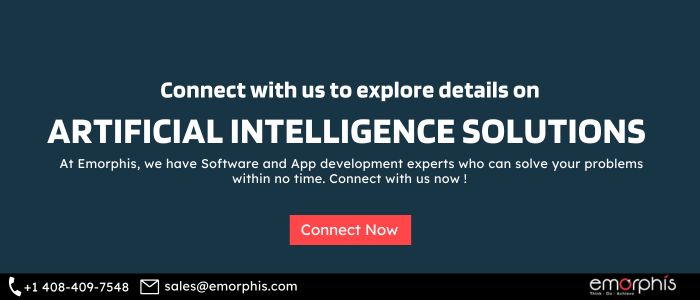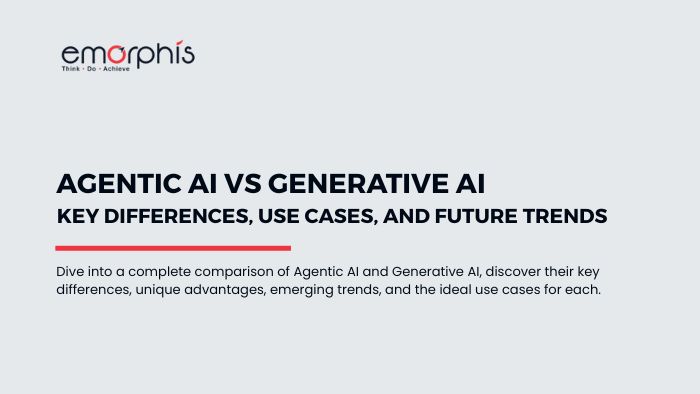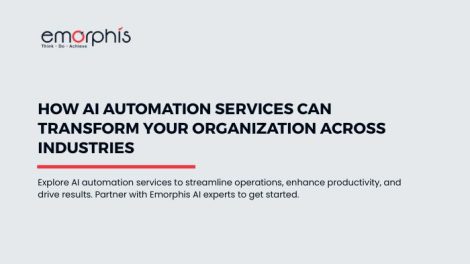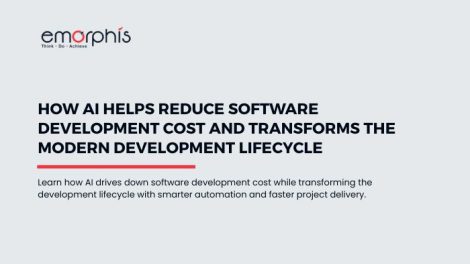Overview
As artificial intelligence continues to evolve, two of the most revolutionary and widely discussed advancements are Agentic AI and Generative AI. Both technologies are shaping the future of automation, intelligence, and creativity across various industries. However, they serve different purposes and have distinct operational frameworks. Understanding the core differences, applications, and future implications of Agentic AI vs Generative AI is essential for business leaders, developers, researchers, and technology enthusiasts.
Let us now explore everything you need to know about Agentic AI and Generative AI, from definitions and examples to practical use cases, benefits, challenges, integration strategies, and future trends.
What is Agentic AI?
Agentic AI refers to a class of AI systems that possess agency, the ability to act autonomously, make decisions, and pursue goals. These systems are capable of reasoning, planning, executing actions, and learning from feedback. Agentic AI models operate in continuous loops: they sense their environment, think, act, and adjust their behavior based on results.
Agentic AI is often described as the next frontier of artificial intelligence, as it shifts from reactive models to proactive, goal-driven systems.
Key Characteristics of Agentic AI:
- Autonomous goal-setting: Agentic AI can determine and pursue objectives.
- Decision-making and planning: Agents can map out multi-step processes to achieve goals.
- Interaction with environments: These AI systems continuously sense and respond to changing contexts.
- Learning from outcomes: Agentic AI adapts based on performance feedback.
- Multi-modal integration: Often integrates with other models (e.g., generative models) for complex tasks.
According to the Mordor Intelligence report on Agentic AI Market Analysis, the Agentic AI market size is projected to grow from USD 7.28 billion in 2025 to USD 41.32 billion by 2030, reflecting a CAGR of 41.48% during 2025-2030.
Agentic AI, which excels at navigating dynamic environments, differs significantly from rule-based systems like Robotic Process Automation (RPA) by making decisions based on patterns and probabilities rather than fixed rules.
In 2024, less than 1% of enterprise software applications utilized Agentic AI, with most AI tools still reliant on user prompts, but this is expected to rise sharply, with nearly one-third of enterprise software incorporating Agentic AI by 2028. Key marketing uses include automating customer interactions, content generation, performance analysis, and real-time offer optimization.

AI agents efficiently gather and analyze data to uncover insights that traditional tools might miss, enabling smarter decision-making. For example, Salesforce reports that sales and customer service teams spend significant time on non-core activities, which Agentic AI can streamline, boosting productivity without extra staffing. In retail, AI agents contribute to 35% of Amazon’s revenue through personalized recommendations, order tracking, and other functions.
In healthcare, AI agents assist in diagnosis, treatment planning, and robotic surgery, with Google’s AI achieving an 85.4% sensitivity in skin cancer detection.
Geographic adoption varies, with Brazil, Spain, Singapore, and Italy leading public sector AI agent use, and 20% of respondents in Germany and the U.S. likely to use AI agents for tax and application tasks. Challenges include managing sensitive data security and regulatory compliance in sectors like finance and healthcare due to the autonomous nature of Agentic AI.
What is Generative AI?
Generative AI is a category of AI that focuses on producing new data or content that mimics existing patterns. Using advanced machine learning models, especially large language models (LLMs), Generative AI can create text, images, code, audio, video, and more.
Unlike Agentic AI, which is designed to act, Generative AI is designed to create.
Key Characteristics of Generative AI:
- Content generation: Produces human-like content based on inputs or prompts.
- Pattern replication: Learns from massive datasets to generate coherent outputs.
- Limited autonomy: Does not make decisions beyond responding to prompts.
- Creativity at scale: Can generate unique and customized outputs for various use cases.
- Examples of Generative AI include ChatGPT, DALL·E, Midjourney, Bard, and GitHub Copilot.
According to the Mordor Intelligence report on the Generative AI Market, the market size is projected to grow from USD 54.40 billion in 2025 to USD 425.25 billion by 2030, at a CAGR of 50.87% during the forecast period.
This rapid growth is driven primarily by the expanding IT sector and the increasing adoption of AI-integrated systems to enhance productivity and agility. Generative AI’s rising popularity in enabling chatbots to conduct effective conversations and improve consumer satisfaction further fuels market expansion. It enables the creation of personalized recommendations, tailored advertisements, and customized products based on individual behavior, while also supporting innovations such as virtual worlds in the metaverse, digital art generation from text prompts, and unique content creation.
Multimodal generative models that process multiple data types like images and text, simultaneously increase their versatility and application scope. Examples include Grammarly’s launch of GrammarlyGo in 2023, an AI-powered writing assistant that helps users compose, edit, and personalize text.
Generative Adversarial Networks (GANs) are widely used for image synthesis, style transfer, video generation, and data augmentation, supported by open-source tools and frameworks like PyTorch and TensorFlow, which lower adoption barriers.
In healthcare, generative AI produces synthetic data to augment scarce medical datasets, helping research while circumventing privacy restrictions; for instance, the GANerAid model from Germany generates synthetic patient data for clinical trials.
While the surge in AI-based solutions helps businesses automate operations and innovate cost-effectively, challenges remain around data security and privacy. Increasing volumes of sensitive data collected across industries heighten risks of cyberattacks and data breaches, especially as connected devices multiply, expanding the potential attack surface.
Agentic AI vs. Generative AI, Core Differences
The primary difference between Agentic AI and Generative AI lies in their purpose and functional architecture.
| Feature | Agentic AI | Generative AI |
| Purpose | Autonomy and decision-making | Content creation |
| Core Function | Goal-directed reasoning and action | Pattern-based generation |
| Interactivity | Continuous sensing and acting | Prompt-based generation only |
| Memory/Statefulness | Often includes memory and long-term planning | Usually stateless |
| Autonomy | Fully autonomous | Dependent on human input |
| Examples | AutoGPT, LangGraph, BabyAGI | ChatGPT, DALL·E, Jasper |
Agentic AI is designed to act independently and achieve outcomes with minimal human intervention. In contrast, Generative AI is designed to generate content when prompted. Agentic AI can use generative models within its decision-making process, but generative models on their own do not act unless invoked.
Agentic AI + Generative AI, The Ultimate Combination
Enough of Agentic AI vs Generative AI, now, when you combine the planning and reasoning of Agentic AI with the content creation abilities of Generative AI, you unlock highly intelligent, end-to-end autonomous systems.
For example:
- An Agentic AI model identifies that a company needs a marketing strategy.
- It breaks down the goal into tasks like competitor analysis, content drafting, and social media planning.
- It uses Generative AI to write the content and visuals.
- The agent evaluates outcomes, adjusts strategy, and regenerates content as needed.
This hybrid model is especially useful in enterprise automation, intelligent assistants, AI co-pilots, research workflows, and customer support solutions. It reflects the direction in which AI technology is heading: toward fully autonomous, intelligent systems that can think, act, and create.
Benefits of Agentic AI and Generative AI
Benefits of Agentic AI:
- Automation of complex workflows: Eliminates repetitive manual tasks.
- Strategic decision-making: Optimizes outcomes based on real-time data.
- High adaptability: Adjusts to changing inputs and environments.
- Reduced human oversight: Handles tasks that traditionally required continuous human input.
Benefits of Generative AI:
- Rapid content creation: Instantly generates blogs, code, designs, and more.
- Cost efficiency: Reduces the cost of hiring creatives or developers.
- Creative assistance: Supports brainstorming, visual design, and storytelling.
- Personalization: Tailors messages and products for specific users.
Combined, they offer intelligent creation and autonomous execution, enhancing business speed, scalability, and quality.
Future Trends: What Lies Ahead?
Agentic AI:
- Autonomous AI developers: Code, test, and deploy apps independently.
- AI CEOs and managers: Simulate leadership and business strategy.
- Mission-critical operations: Used in space exploration, disaster response, and cyber defense.
Generative AI:
- Hyper-personalized content: Ultra-targeted marketing and adaptive media.
- Multimodal generation: Text-to-video, voice-to-animation, and beyond.
- Integrated creativity tools: Embedded into design, writing, and media software.
Convergence:
- Cognitive agents: Think, create, execute, and refine continuously.
- AI orchestration layers: Manage multiple AI agents and models working in harmony.
- Enterprise automation: Seamless workflows powered by intelligent decision-making and content generation.
When to Use Agentic AI vs Generative AI
| Scenario | Recommended AI Type |
| Need to write content, blogs, emails | Generative AI |
| Automating a multi-step business workflow | Agentic AI |
| Designing product mockups and visuals | Generative AI |
| Analyzing data and taking action based on results | Agentic AI |
| Running long-term autonomous processes | Agentic AI |
| Creating personalized communication at scale | Generative AI |
| Building self-improving systems (e.g., personal finance advisor) | Agentic AI |
| Generating creative ideas for campaigns | Generative AI |
| Managing dynamic projects with dependencies | Agentic AI |
| Rapid prototyping and design iteration | Generative AI |
| Scaling customer service with chatbots | Agentic AI |
| Writing scripts, ads, or promotional materials | Generative AI |
| Optimizing supply chains or logistics operations | Agentic AI |
| Simulating user behavior in software testing | Agentic AI |
| Auto-generating product descriptions or metadata | Generative AI |
| Coordinating multi-agent tasks in smart factories | Agentic AI |
| Generating customer insights or persona narratives | Generative AI |
| Developing AI-powered virtual tutors | Agentic AI |
| Creating educational material or quizzes | Generative AI |
| Managing digital twins in smart cities | Agentic AI |
Choose Agentic AI for planning, decision-making, and actions. Choose Generative AI for writing, designing, and creative ideation. Use both when intelligent execution and creative output are required together.
Final Thoughts
The discussion of Agentic AI vs Generative AI is not about superiority but suitability. Agentic AI is about autonomy, decision-making, and intelligent execution. Generative AI is about creativity, communication, and content production.
Together, they form the foundation of next-generation AI solutions that think, act, and create.
Businesses looking to adopt intelligent automation and personalized experiences must invest in both technologies. As AI continues to mature, the fusion of Agentic AI and Generative AI will become the backbone of smart enterprises and intelligent systems.

To explore how Agentic AI and Generative AI can transform your business processes, content creation, or automation strategies, connect with the AI experts at Emorphis.
Our team specializes in building intelligent, scalable, and secure AI solutions tailored to your specific needs. Whether you’re looking to implement autonomous agents, enhance productivity with generative tools, or integrate both for end-to-end automation, we’re here to guide you every step of the way.
Reach out today to unlock the full potential of advanced AI technologies.







